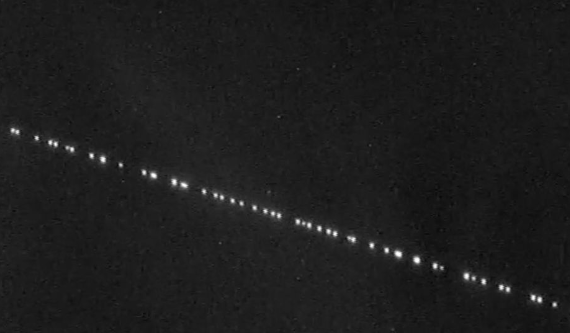In the realm of satellite technology, SpaceX’s Starlink project has become a topic of fascination for both the astronomical community and the general public.
A common spectacle associated with the Starlink constellation is the “satellite train,” a string of satellites following a similar orbital path shortly after their deployment.
In this blog, let’s address, what exactly Starlink satellite train length is and the factors that contribute to its appearance.

When a new batch of Starlink satellites is launched, they are released into orbit at a relatively close distance from one another. Initially, they appear in the night sky as a “train” of closely spaced bright dots moving in a straight line.
This phenomenon occurs because the satellites are still in the process of manoeuvring to their final operational altitudes and orbital positions.
The Length of the Satellite Train
The length of a Starlink satellite train can vary depending on several factors:
1. Number of Satellites
Each Falcon 9 launch typically deploys around 60 Starlink satellites. The train’s length will be directly related to the number of satellites deployed in that particular batch.
2. Spacing Between Satellites
Shortly after deployment, the satellites are relatively close together, but as they move to their operational orbits, they will spread out. The initial train can extend for several kilometres in the sky as the satellites are spaced a few kilometres apart.
3. Visibility
The perceived length of the satellite train also depends on the observer’s location and the satellite’s altitude. The lower the satellites are in their orbit, the longer and more visible the train appears to be.
The Duration of the Satellite Train’s Visibility
The “train-like” appearance is temporary. As the satellites raise their orbits and move to their designated positions, the distances between them increase, and they become less noticeable in the sky.
After a few weeks or months, the satellites will no longer be visible in a train formation and will instead be seen as individual moving points of light, if at all.
